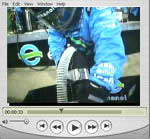 Fuel
Economy Focus Fuel
Economy Focus
JESSICA SHEA CHOKSEY:
With the 2007 Indycar series nearing the finish line, the switch between methanol to 100% fuel-grade ethanol to power these clean racing machines has proven to be a winning move both on the track and in pit lane.
Ethanol fuel not only burns cleaner than methanol, but it has a higher octane rating, improves fuel efficiency, and gives better engine performance, something every race driver wants. Indycar brings its own fuel tanker to every race, so each competitor knows the fuel is consistent from car to car and tank to tank.
TONY KANAAN, INDYCAR DRIVER:
If we can run them in our race cars at 240 miles-per-hour, I think they can run in street cars.
CHOKSEY:
Pit crews are also breathing easier, finding that ethanol vapors are not as harsh on the eyes and lungs as methanol. It seems the only ones who haven’t noticed any change are the fans. Indycar racing remains every bit as fast and exciting as ever, but is now less harmful to the environment and is helping to reduce our dependence on foreign oil.
Indycar is the first and so far only major racing series to recognize the benefits of ethanol and to mandate its use in all its cars. The move came about after driver Paul Dana secured sponsorship from the ethanol industry, and then sold the league on the idea of switching to this clean, renewable, domestic fuel. Tragically, Paul was killed while practicing for the first race of 2006, and never saw his dream become a reality.
Other racing series from sprint cars to drag racers are taking notice of Indycar’s green leadership. The American LeMans series is now running a 10% ethanol/gasoline blend, and other motorsports teams are also beginning to discover the clean power of ethanol. And that’s it for this week’s MotorNews.
|